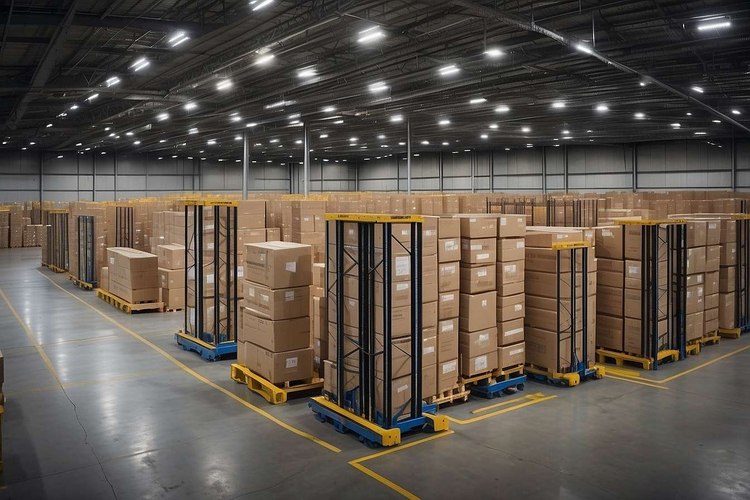Temperature-Controlled Food Delivery for Perishable Goods
Cold supply and predictable delivery routines are increasingly important as food delivery expands beyond hot takeout to groceries, meal kits, and medical nutrition. Successful food delivery systems that handle perishable goods combine logistics planning, monitored temperature control, and appropriate packaging to preserve quality and safety during transit. This article explains the key components of temperature-sensitive delivery and how different services and carriers approach the problem.

This article is for informational purposes only and should not be considered medical advice. Please consult a qualified healthcare professional for personalized guidance and treatment.
What is cold chain transport?
Cold chain transport refers to the series of temperature-controlled links — from processing and storage to distribution and last-mile delivery — that preserve perishable goods. Maintaining an unbroken cold chain reduces microbial growth and slows spoilage for dairy, meat, seafood, and some prepared meals. Cold chain systems rely on refrigerated warehouses, insulated packaging, refrigerated transport vehicles, and monitoring systems that log temperatures to confirm conditions remained within specified ranges.
How does food delivery address safety and quality?
Food delivery providers use a combination of operational controls and packaging to protect food quality. For consumer-facing food delivery, this includes insulated bags, gel packs, or thermal boxes for groceries and prepared meals. Restaurants and meal-kit companies may pre-chill items and use time/temperature labeling to indicate safe consumption windows. For regulated or sensitive goods, documented procedures, staff training, and audit trails help ensure compliance with food safety standards and customer expectations.
When is refrigerated transport necessary?
Refrigerated transport is necessary whenever products require sustained cold conditions to remain safe or meet quality standards. This includes fresh produce with chill-sensitivity, refrigerated ready-to-eat meals, frozen items, and temperature-sensitive pharmaceuticals or specialty nutritional products. Choice of vehicle and scheduling depend on distance, expected transit time, and the product’s target storage temperature (e.g., chilled at 0–4°C or frozen at −18°C and below). Last-mile refrigerated options are increasingly used for short urban deliveries when maintaining the cold chain is critical.
Why is temperature control critical for perishable goods?
Temperature control directly affects safety, shelf life, and sensory quality. Even brief exposure to elevated temperatures can accelerate spoilage, allow pathogen growth, and degrade texture or flavor. For many perishable goods, safe temperature ranges are well-defined; exceeding them increases risk. Monitoring devices, GPS-linked telemetry, and time/temperature indicators provide traceability and allow carriers and senders to identify deviations and take corrective action, reducing waste and health risks.
Handling perishable goods during last-mile food delivery
Last-mile handling requires careful coordination: picking orders in the right sequence, using insulated carriers, and minimizing dwell time. Drivers and couriers may group chilled and ambient deliveries separately and use clearly labeled compartments or thermal containers. For subscription meal kits or high-value chilled groceries, companies sometimes offer scheduled delivery windows to reduce time at ambient temperatures. Clear customer instructions (e.g., immediate refrigeration) and visible temperature indicators help recipients know how to store products on arrival.
Providers differ in capabilities and focus. Below is a concise list of recognizable providers across consumer food delivery and specialized refrigerated logistics, with their typical services and features.
| Provider Name | Services Offered | Key Features/Benefits |
|---|---|---|
| Instacart | Grocery shopping and delivery from local supermarkets | Same-day delivery, option for cold/grocery handling, partnerships with retailers |
| DoorDash | Restaurant and grocery delivery network | Wide last-mile coverage, insulated courier bags commonly used by fleets |
| Uber Eats | Restaurant and some grocery deliveries | Large driver network, scheduling and delivery tracking features |
| Americold | Cold storage and refrigerated logistics | Large network of temperature-controlled warehouses and distribution services |
| Lineage Logistics | Cold storage, transportation, and fulfillment | Integrated cold chain services, public and private warehousing options |
| Kuehne+Nagel | Global cold chain logistics and freight services | End-to-end refrigerated freight and temperature monitoring solutions |
Prices, rates, or cost estimates mentioned in this article are based on the latest available information but may change over time. Independent research is advised before making financial decisions.
Conclusion
Delivering perishable goods safely requires a coordinated cold chain that spans storage, transport, packaging, and last-mile handling. Whether using consumer food delivery platforms for groceries or specialized refrigerated logistics for bulk shipments, understanding temperature requirements and monitoring options reduces spoilage, supports food safety, and helps maintain product quality from origin to recipient. Consistent procedures and transparent tracking are central to reliable temperature-controlled food delivery.




